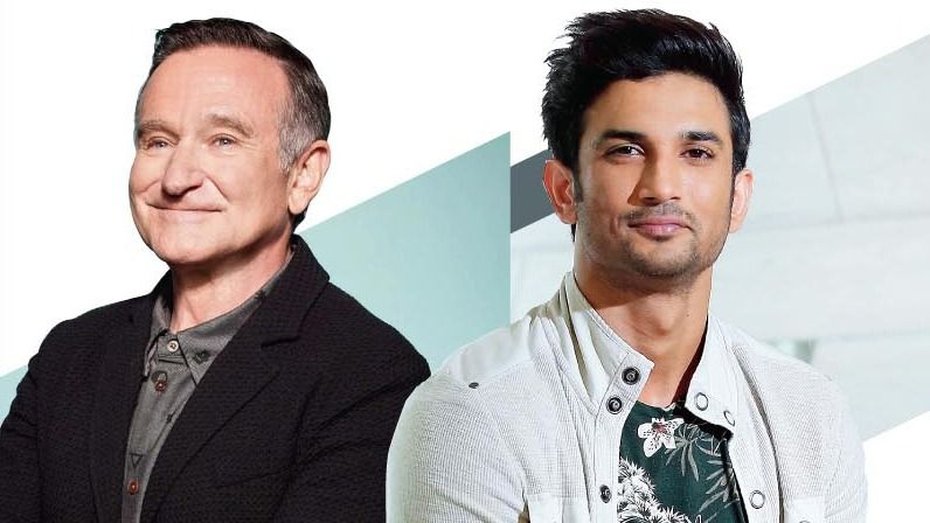Heart of the matter Suicide, like life, is a complex phenomenon. How it gets reported is equally complex
- Posted By: Studio
- Entertainment
- Updated: 17 April, 2024 14:49
- 1495

Sushant Singh Rajput’s suicide has us all transfixed. He is possibly the most famous celebrity in India to have died by suicide. Any suicide is puzzling but this is more so. It is really incomprehensible why one, at the prime of his life, wants to opt for death. I do not recall suicide of any person having drawn so much attention in print, television and social media for so many days in our part of the world. The media must have felt it is newsworthy, otherwise, in an age when we have an attention span of 15 seconds, they continued to cover it for days.
High-profile suicides or active coverage of suicides in the media are known to trigger copycat suicides. This is no exception. All mental health professionals have been struggling with calls and messages from people under their care, about how despondent they have been feeling and how shaken they are with his death.
There was a nearly 10 per cent spike in suicides following Robin Williams’s death. There is always an upswing following high-profile events. The increased vulnerability is itself depressing, and that depressing information interacts with our own unguarded selves. Many of my patients who have called me confided that the actor’s death has shaken them to the core. “If he did not survive, how can I?” asked my 55-year-old patient who has been battling depression following the untimely death of her husband.
Some media reports I saw transgressed the good practice guidelines of covering suicide. There are national and international guidelines on how to report such incidents. The Press Council of India released a document in September 2019 on how to report deaths by suicide. The guidelines, like many others in our country, remain on paper only. The coverage reminded me of another tragic incident which happened in Calcutta about a year back. A teenage girl died by suicide in the toilet of her school. The heart-wrenching details of her personal diary and graphic details of the circumstances she was found in were described in detail by a few media outlets. Was it really necessary?
Don’t cause irreparable harm
The first principle of any professional intervention, including news reporting, has to be do no harm. The coverage of suicides in our country mostly break all norms for respecting privacy and the known norms of reporting suicide. In the case of the teenage girl, she left a detailed note, which provided painful glimpses into her troubled mind. The detailed note must have been made accessible to the media by someone in authority, again a mark of remarkable insensitivity.
For Sushant Singh Rajput’s death, the coverage too went overboard but there was something new. A particular national media outlet quoted the actor’s psychiatrist, giving intimate details of his personal life and treatment to the police. This caused irreparable harm. Many of those who seek help from us, worry justifiably about confidentiality and the sanctity of the conversations they have with their psychiatrists. A significant proportion of people who come to us were appalled at this revelation. His angst, shared in absolute confidence with his doctor, was revealed and was now fodder for dissection and blame.
The reality is, and fortunately for our profession, that his psychiatrist had done no such thing. The story was a lie and was eventually pulled down from the media outlet’s website. But the damage was already done. This coverage sowed the seeds of doubt in minds of many people, about the confidential nature of doctor-patient communication.
Some basic guidelines and principles of reporting suicide are...
- Do not give too many details on suicide methodology. This suggestion is flagrantly violated. There is evidence to show that going into a lot of gratuitous detail about how a person ended their life can induce imitational behaviour in readers or viewers who may be at risk. This is called triggering or contagion effect.
- Do not suggest that a suicide was caused by a single event. Suicide is a complex event, and is often the outcome of different causes, including mental illness.
- Placement and presentation of the news. Avoid front page unless the reporting involves public interest. The way of presentation should consider the feelings of the surviving relatives and friends. If the photo of the deceased or the surviving relatives and friends is published, this will hurt the survivors deeply. Further, details of suicide in media rekindle the painful memories of numerous families.
- Every coverage ideally should give helpline numbers and a message that help is available for those who are feeling suicidal or depressed.
Suicide is a result of despair, hopelessness and the feeling of being a burden on others. Persons dying by suicide do not see any meaning in their life or find any rays of hope. It can be due to mental illness or due to life circumstances, but is almost always the result of both or other contributory factors which we do not know about. The burden of living becomes far too heavy. It cannot be shaken off. It cannot be gotten rid of by listening to music or chatting with friends. Those who are contemplating suicide often do not believe that their despair can remit, hence they do not reach out for help. It is futile to blame them for not having reached out.
Suicide, like life, is a complex phenomenon. Research shows no one takes their life for one single reason, but rather for a combination of factors. Reporting a single cause leaves all of us, with an overly simplistic and misleading understanding of suicide. Blaming a particular group in the film industry for nepotism and attributing that as a cause in the actor’s situation is far too naive.
Suicide rates are increasing. What explanation can there be for this catastrophic escalation? The answers swirl around like a dust cloud. Media has a significant impact on our lives. How suicide is reported has a definite influence in promoting or reducing suicide rates and attempts. There are no perfect solutions to reduce or prevent suicides. There is a dearth of empathy, even of kindness, in the reporting or expressing our thoughts about suicide and those deficits do have an impact on those who are vulnerable. Language and communications are vital tools for all of us in this fight against stigma of mental illness and suicide. Our conversations should not discourage people to seek help. Suicide is a not a “defeat”. Those who die by suicide are not cowards. Calling them cowards do not make us brave.









Comments